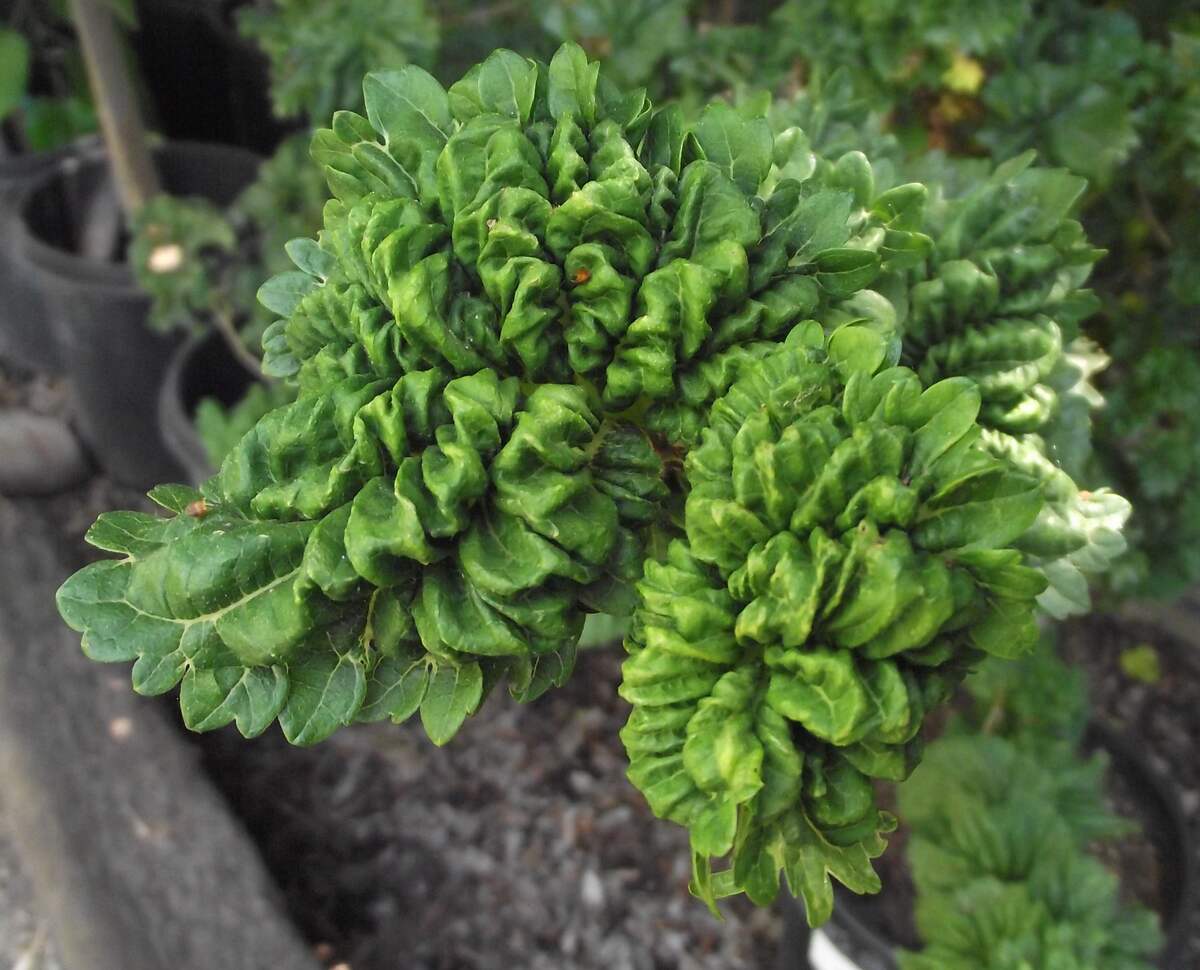
Everyone has an idea about what kind of trees they want in their yard — and for different reasons. Some want more shade or pretty ornamental trees for their Houston yard. Others choose fruit-producing ones. But what some people don’t know is that they might be doing more harm than good if they want one of these six worst trees to plant in Houston.
Consider Your Climate and Hardiness Zone
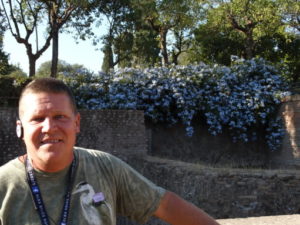
Your climate and hardiness zone should guide your tree selection decisions, not sentimentality. For example, some people want trees that remind them of home. That urge can be a problem, as Joshua Kornegay of Joshua’s Native Plants warns in an emphatic email:
“NEW gardeners often ask me to sell them species that either do NOT grow in the zone/climate or … ask for something I do not recommend,” says Kornegay, a native Houstonian with more than 25 years in the green industry.
“For example, northerners often ask for cherry trees, for the fruit … It doesn’t get COLD enough down here for them to put on fruit!”
Just Because You Can Plant Doesn’t Mean You Should
You can get just about any tree you’d like at a nursery or home improvement store. That doesn’t mean it suits your yard or will grow well in Houston.
As Joshua told us, “The mature size of a tree should FIT the size of your proposed planting area. Small yard? [Choose a] small tree or narrow-crowned tree. Sounds easy, right? Well, you’d be surprised at the DISASTERS I’ve seen! WE have, (or can get you) almost ANY tree you desire. BUT only after you do your homework.”
Trees, like other types of plants, work in some places while in others they don’t. So today, we’re looking at the six worst trees you can plant here in Houston
1. Japanese Blueberry (Elaeocarpus decipiens)
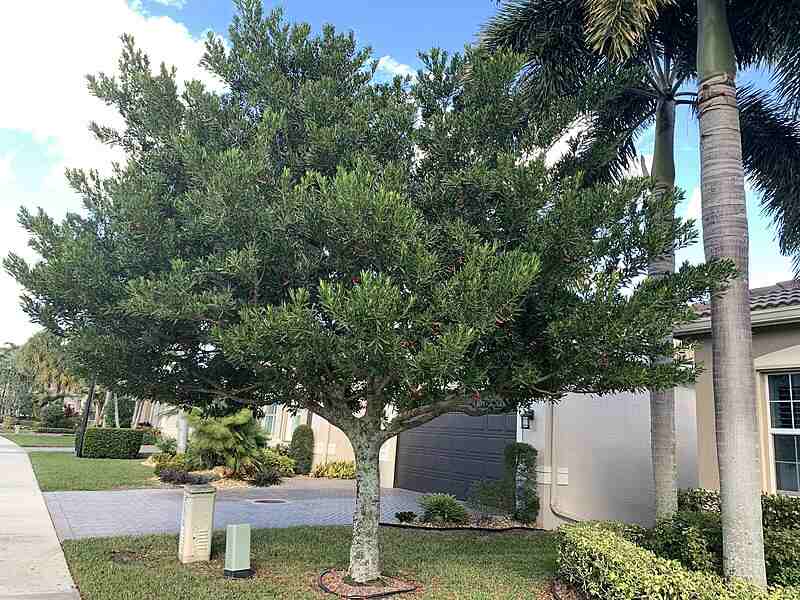
The Japanese blueberry tree is a broadleaf beauty that is more trouble than it’s worth in Houston. It’s a pretty tree, producing ornamental flowers each spring and dark blue — though inedible — fruit in the winter months. But don’t let its looks fool you. You should avoid planting Japanese blueberry trees in Houston.
As Joshua told us, “New-home builders often plant these as they are easy to take root and grow quickly. BUT, as the years go by, this species is a BUG magnet and is prone to soot, a black powdery airborne fungus that is pretty much INCURABLE!”
- Hardiness zones: 8-11
- Sun: Full sun to partial shade
- Soil: Tolerates neutral to slightly alkaline soils
- Foliage: Broadleaf evergreen
- Moisture requirements: Moderate
- Mature size: 40-60 feet tall, 20-40 feet wide
2. Mimosa (Albizia julibrissin)
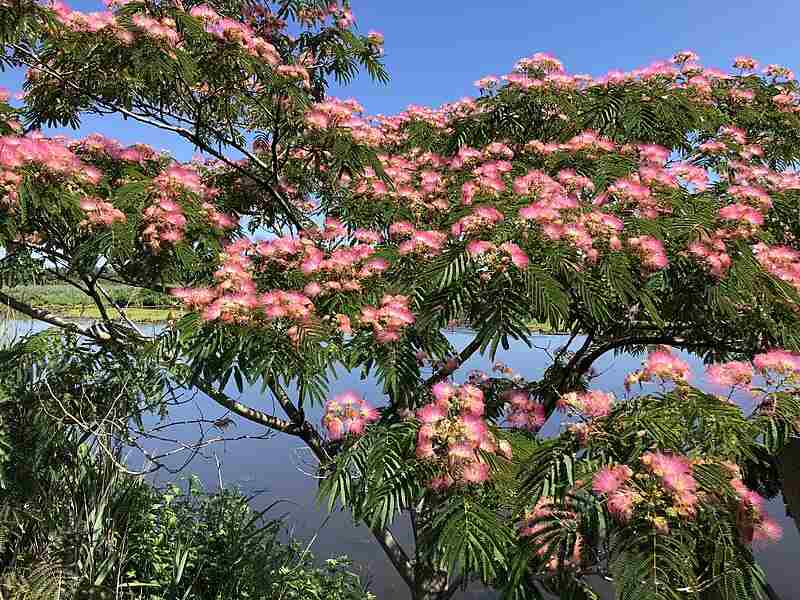
The mimosa (like the one pictured above), with its delicate, almost lacey foliage is an instant eye-catcher. Just don’t put it in your Houston yard. It’s an invasive exotic tree brought to the States in 1745 from China. It grows quickly and offers shade and a few weeks of beautiful pink flowers.
But the rest of the year, mimosas are unattractive (unless you like big, brown seed pods hanging down), it sheds, and it can quickly spread, threatening other plants in your yard.
- Hardiness zones: 7-10
- Sun: Full sun
- Soil: Adapted to most soils, including sand, loamy, clay, acidic, and slightly alkaline
- Foliage: Dark green foliage
- Moisture requirements: Moderate
- Mature size: 20-30 feet tall, 25-40 feet wide
3. Hackberry (Celtis occidentalis)
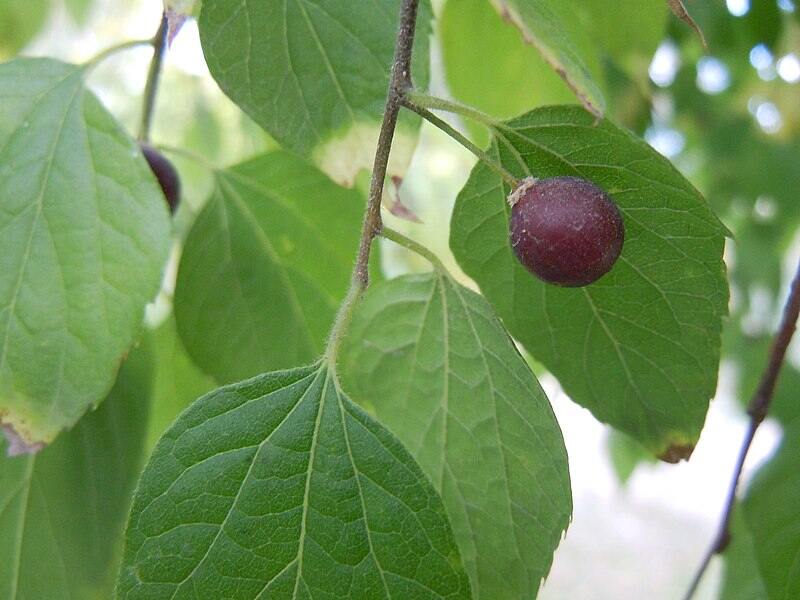
With small fruits that attract birds, who wouldn’t want a hackberry? Houston homeowners, that’s who. Actually, it’s not a good choice in any urban or suburban area for two reasons. First, it’s a weedy tree that insects love to feed on — especially woolly aphids. And second, the hackberry has invasive roots that can thwart the growth of other plants in your yard.
- Hardiness zones: 3-9
- Sun: Full sun to partial sun
- Soil: Well adapted to most soils except high alkaline soils (>8 on the pH scale), depending on the variety
- Foliage: Deciduous
- Moisture requirements: Low
- Mature size: 40-80 feet tall, 40-50 feet wide
4. Ash (Fraxinus texensis)
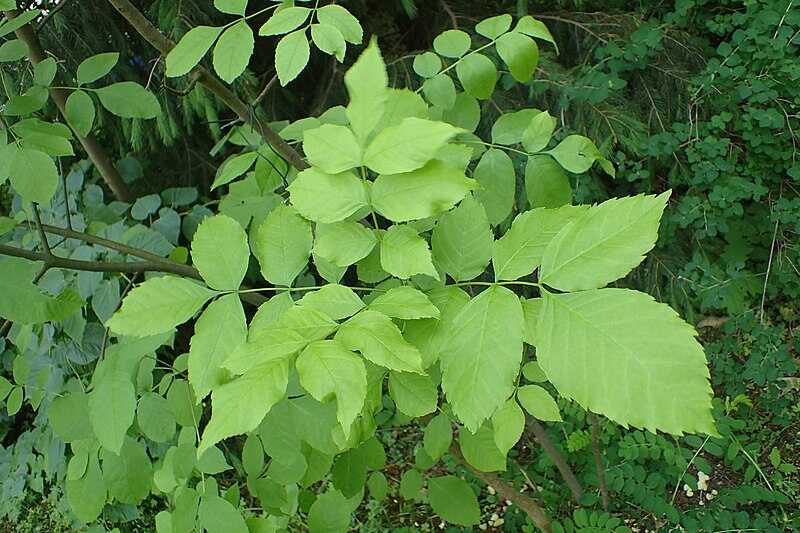
Ash is a popular tree throughout the Houston area with many different varieties — so why did it make the list? Ash trees are naturally brittle, which means they are very susceptible to damage in heavy winds. If you plant one of these, expect hurricane season to be extra nerve-wracking once it grows tall. You can kiss your low-maintenance Houston landscape goodbye.
On top of the risk of damage, there’s also the issue of the infamous emerald ash borer. This is a beetle, native to Asia, that is wreaking havoc on ash trees in this country. At the time of this article, it hasn’t been spotted in Houston yet. However, it has already moved into northeastern Texas, so it’s just a matter of time.
- Hardiness zones: 7-9
- Sun: Full sun to partial shade
- Soil: Prefers rocky, sandy, or clay soils
- Foliage: Deciduous
- Moisture requirements: Low
- Mature size: 35-45 feet tall, 30-40 feet wide
Note: The above stats are for Texas Ash. These stats may change depending on the variety of ash tree.
5. Bradford Pear (Pyrus calleryana)
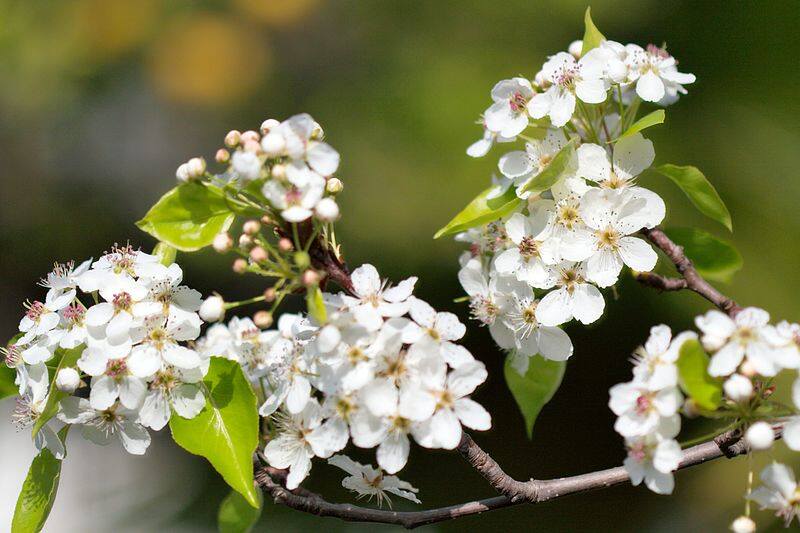
Granted, the Bradford pear is gorgeous to look at when it is in full bloom in the spring, but this once-popular Houston tree is now becoming an invasive menace. Those lovely flowers stink like rotting fish. If that’s not bad enough, this tree’s branch structure is weak.
The Bradford pear’s main trunk tends to crack, and it leaves debris everywhere anytime there’s a storm or hurricane. Plus, even the best grass types for Houston don’t grow very well under it, so expect a big pile of dirt in your yard underneath this tree.
- Hardiness zones: 5-8
- Sun: Full sun
- Soil: Adapted to most soils except wet soils
- Foliage: Deciduous, leathery leaves
- Moisture requirements: Low
- Mature size: Around 35 feet tall, around 25 feet wide
6. Mulberry (Morus alba)
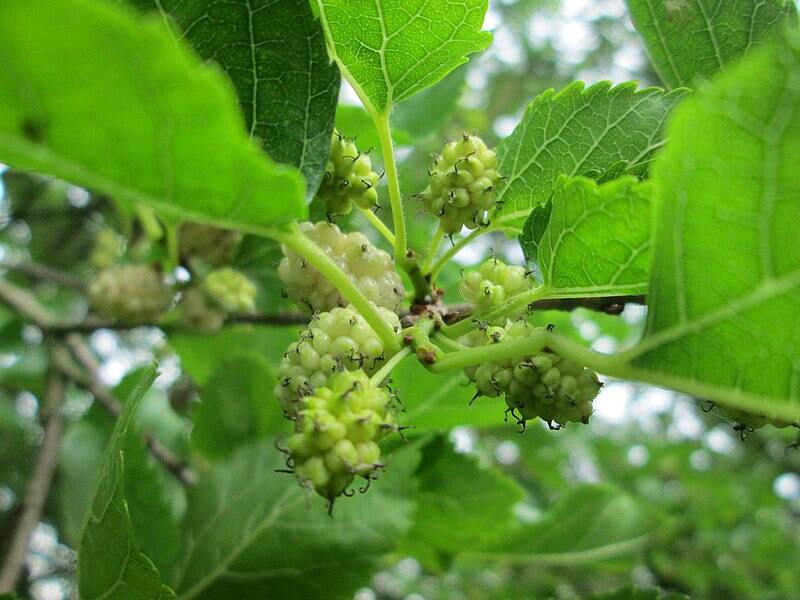
Houstonians have enough problems with allergies these days. And planting a white mulberry can make matters worse. The male trees produce so much pollen that you and your family will sneeze and wheeze for days or weeks come springtime.
Mulberry trees are also prone to insects and have tree roots so aggressive that you will see cracks eventually if it’s anywhere near your sidewalk or driveway. The fruit from Mulberry trees also has a tendency to stain patios, walkways, and driveways. Consider how much you like your sidewalk before adding this tree to your landscape.
- Hardiness zones: 4-8
- Sun: Full sun
- Soil: Prefers clay, loam, and sandy soils
- Foliage: Deciduous
- Moisture requirements: Low
- Mature size: 30-60 feet tall, 20-40 feet wide
FAQ About Houston Trees
The worst trees to plant in Houston are the ones that are either invasive or unfit for Texas’s climate. The following trees are bad for Houston lawns in a few different ways:
● The root systems of some trees, like the hackberry and mulberry, grow so aggressively that they can halt the growth of other plants in your yard.
● Stay clear of weak trees like ash. Despite being a popular choice, these trees do not hold up against the harsh weather often found in Houston during hurricane season.
● Invasive species outcompete native species for resources. Don’t be fooled by flowering trees like the Bradford pear, which might look pretty, but are actually invasive to the area.
Homeowners should know what kind of conditions a tree needs before planting a species that may not be suited for their lawn or area.
The best trees for Houston are mostly the native species (with some exceptions) that thrive in that Texas heat:
● A Nuttall oak is a type of red oak tree that arborists consider one of the best large trees for the area. It’s also one of the most popular native shade trees.
● The Southern magnolia is a common tree found in Houston lawns. Its fragrant white flowers are an instant eye-catcher for any front yard.
● Drake elms are known best for their fast-growing nature and ability to provide shade. They also stand up well against bad weather.
Note: While live oaks are abundant in Houston, they are not recommended as one of the best trees. They give too much shade for grass to grow underneath.
The best time to plant trees in Houston is from mid-November to late February. This time frame allows new trees time to develop root systems and become established before the high moisture requirements of summer arrive.
If you plan on planting above ground in containers, you can do this any time of the year. The same is true for balled and burlap trees.
Call in the Professional Tree Planters
Choosing trees to plant in Houston doesn’t need to be a big, scary decision. When you know what you want and what would work well in your yard, the only thing left to do is plant. Don’t let fear keep you from realizing the tree-filled yard of your dreams. Call a Houston landscape expert to help you select and plant the perfect tree without your having to lift a finger.
Main Image Credit: Tortie tude / Wikimedia Commons / CC0 1.0